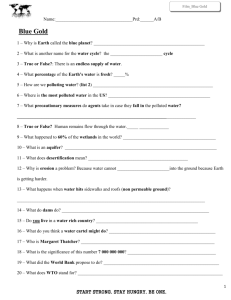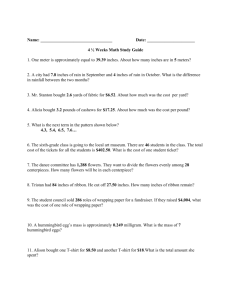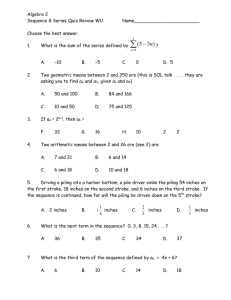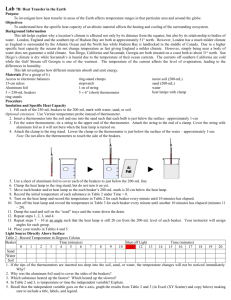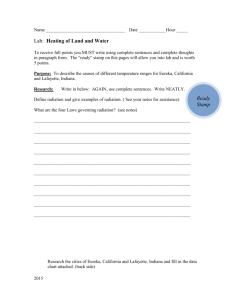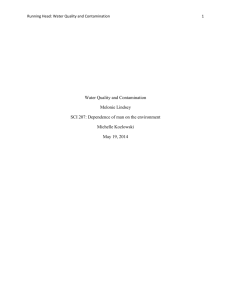Make Your Own Ground Water Model
advertisement
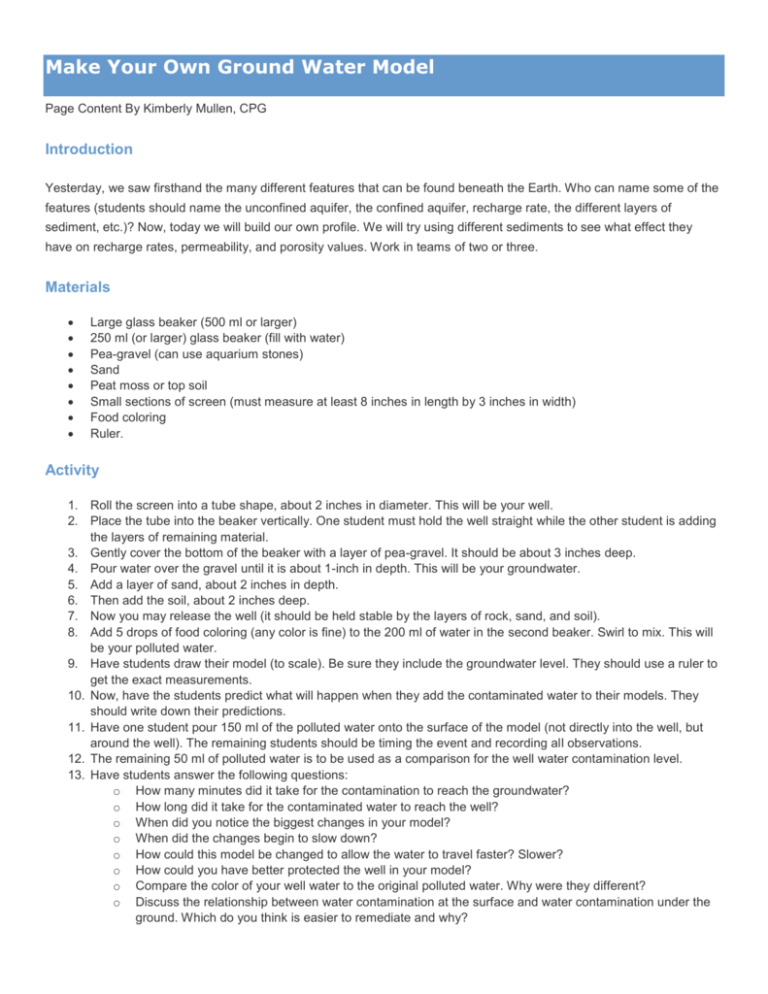
Make Your Own Ground Water Model Page Content By Kimberly Mullen, CPG Introduction Yesterday, we saw firsthand the many different features that can be found beneath the Earth. Who can name some of the features (students should name the unconfined aquifer, the confined aquifer, recharge rate, the different layers of sediment, etc.)? Now, today we will build our own profile. We will try using different sediments to see what effect they have on recharge rates, permeability, and porosity values. Work in teams of two or three. Materials Large glass beaker (500 ml or larger) 250 ml (or larger) glass beaker (fill with water) Pea-gravel (can use aquarium stones) Sand Peat moss or top soil Small sections of screen (must measure at least 8 inches in length by 3 inches in width) Food coloring Ruler. Activity 1. Roll the screen into a tube shape, about 2 inches in diameter. This will be your well. 2. Place the tube into the beaker vertically. One student must hold the well straight while the other student is adding the layers of remaining material. 3. Gently cover the bottom of the beaker with a layer of pea-gravel. It should be about 3 inches deep. 4. Pour water over the gravel until it is about 1-inch in depth. This will be your groundwater. 5. Add a layer of sand, about 2 inches in depth. 6. Then add the soil, about 2 inches deep. 7. Now you may release the well (it should be held stable by the layers of rock, sand, and soil). 8. Add 5 drops of food coloring (any color is fine) to the 200 ml of water in the second beaker. Swirl to mix. This will be your polluted water. 9. Have students draw their model (to scale). Be sure they include the groundwater level. They should use a ruler to get the exact measurements. 10. Now, have the students predict what will happen when they add the contaminated water to their models. They should write down their predictions. 11. Have one student pour 150 ml of the polluted water onto the surface of the model (not directly into the well, but around the well). The remaining students should be timing the event and recording all observations. 12. The remaining 50 ml of polluted water is to be used as a comparison for the well water contamination level. 13. Have students answer the following questions: o How many minutes did it take for the contamination to reach the groundwater? o How long did it take for the contaminated water to reach the well? o When did you notice the biggest changes in your model? o When did the changes begin to slow down? o How could this model be changed to allow the water to travel faster? Slower? o How could you have better protected the well in your model? o Compare the color of your well water to the original polluted water. Why were they different? o Discuss the relationship between water contamination at the surface and water contamination under the ground. Which do you think is easier to remediate and why?




